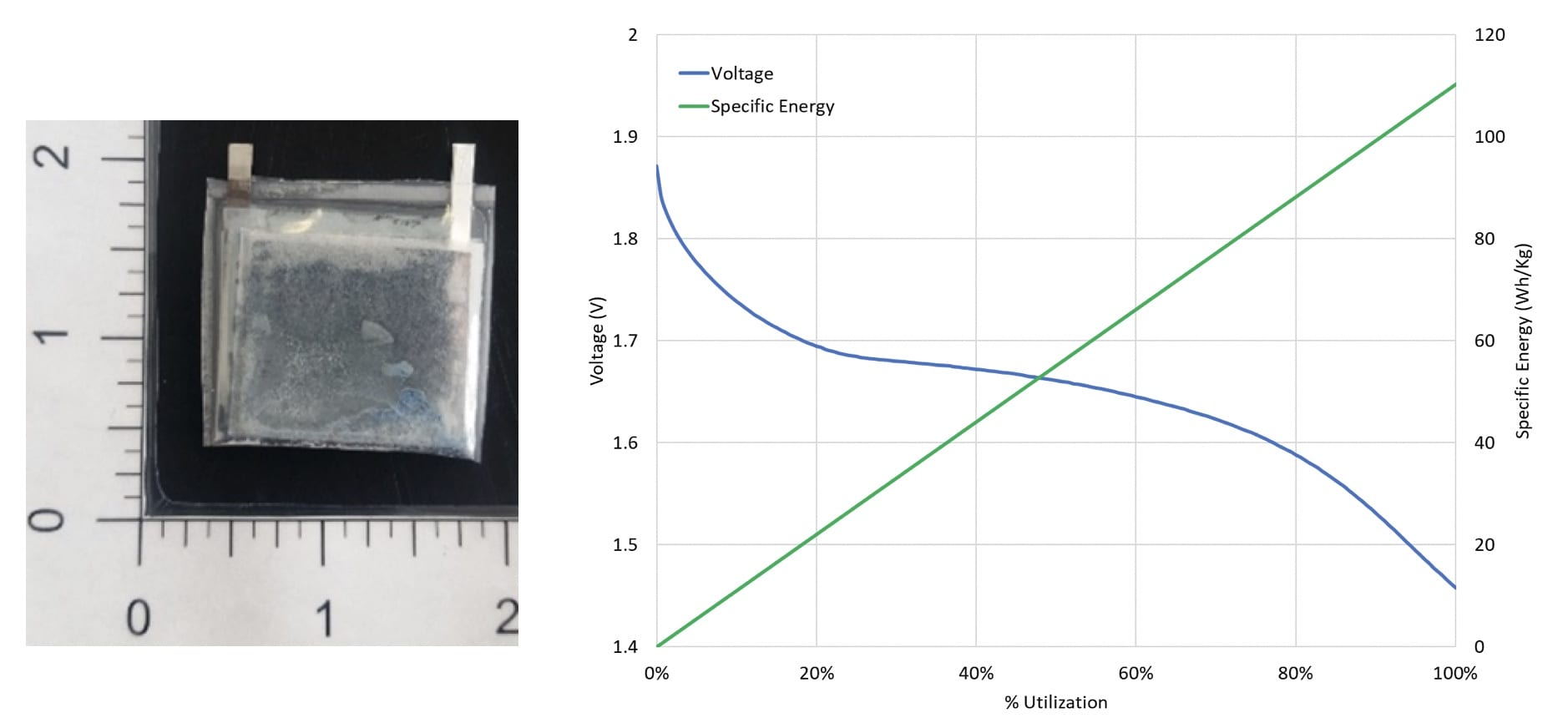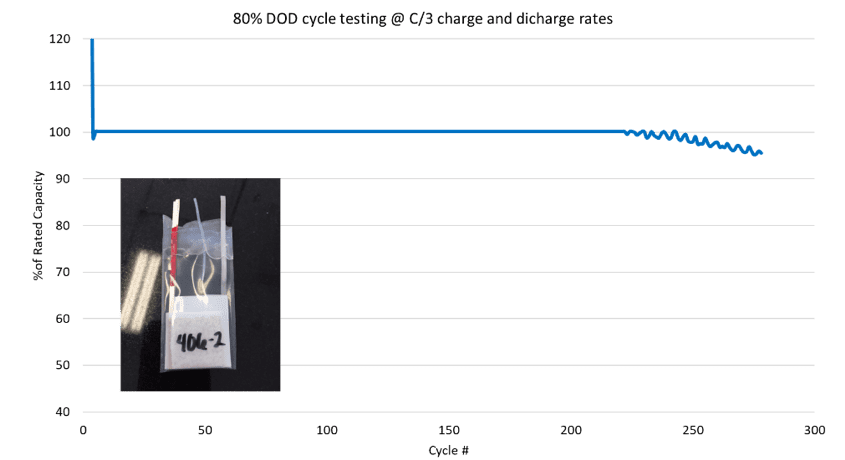NiZn Pouch
NiZn Pouch Design
New market requirements and regulations are driving demand beyond what lead acid can provide. With over 30 years of development, Æsir has found a sustainable solution.
Æsir’s patented NiZn pouch cell design is engineered for safety, high specific energy, high power, and low cost while also delivering long life with environmentally friendly chemistry. With a flexible design, the NiZn pouch cell can be designed for various capacities, voltage, and power applications. The Æsir pouch cell design pushes the boundaries of the NiZn chemistry, with a specific energy of up to 100 Wh/kg, thus making the technology competitive with lithium-ion technologies without the safety concerns and complicated battery management systems, which add significantly to the total weight of the system.
Prismatic batteries have rigid and heavy outer cases that limit their use to applications that are not constrained by size and weight restrictions. Æsir’s NiZn pouch cell eliminates the outer cell case, creating new possibilities for applications with NiZn batteries, as well as greatly increasing the specific energy and energy density of the cells. The pouch cell is versatile with designs that can be tailored for systems with limited battery space or that require a thin, lightweight, and flexible battery such as medical and portable electronic applications. The pouch cell also makes efficient use of space allowing for lower specific energy costs. Æsir’s NiZn pouch cell is helping to pave the way in new areas for NiZn chemistry in the vast battery market.
SUPERIOR PERFORMANCE...
UNSURPASSED SAFETY and SUSTAINABILITY
Discharge Curve Results
The voltage and specific energy curves for a Aesir R&D pouch cell discharged at a C/3 rate are shown in Figure 2. This test cell had a rated capacity of 359 mAh and achieved a specific energy 110 Wh/kg. Although this cell was not optimized for specific energy, its performance provides sufficient evidence that we can achieve 120 Wh/kg.
Cycle Testing Results
Æsir has cycle tested R&D NiZn pouch cells at an 80% DOD. As shown in Figure 3, results from one of these tests exhibited over 95% capacity retention in excess of 250 deep discharge cycles. Since the primary source of failure in these R&D cells is associated with dry-out due to the open-air configuration of the pouch, we believe cells that have better gas management will have even longer cycle life.




